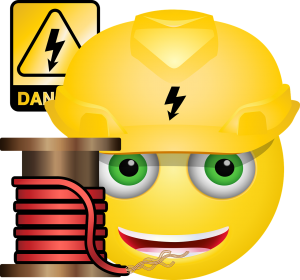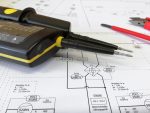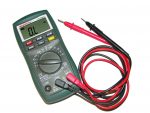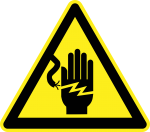Electrical codes are a rigorous set of rules that all electricians must follow on the job.
It includes the following:
- Practices and standards that must be followed when making connections and running wires in various settings
- Types of acceptable materials, redundancies, and methods and protocols that should be followed to complete the job
These codes greatly focus on safety, ensuring that all installations are done with care, diligence, and attention to detail.
These safety measures ensure the following:
- Buildings with electrical systems installed aren’t at risk of catching fire
- People using electrical systems and appliances in their homes and workplaces aren’t at risk of shock
- Electricians performing installations and upgrading or making alterations to the system are safe
The general standards of materials and practices required by all jurisdictions are set by a small group of international and national safety standards agencies.
However, different state and local level regulatory agencies may have specialized additions or alterations to the electrical code in their jurisdiction.
Three main bodies have set and maintained standards for national and international electrical codes.
- International Code Council (ICC)
- Institute of Electrical and Electronics Engineers (IEEE)
- National Fire Protection Association (NFPA)
On this page, you’ll learn which codes they oversee and what each code contains.
Electrical Codes from the International Code Council
The ICC has been developing national model construction codes since 1994.
For more than 20 years, all U.S. states have adopted the ICC codes at the state and local levels.
The ICC developed three code standards relevant to the electrical trade and recognized internationally.
- International Fire Code (IFC)
- International Building Code (IBC)
- International Energy Conservation Code (IECC)
International Fire Code
The IFC is adopted in all states except Maine, Hawaii, Florida, Maryland, Rhode Island, Massachusetts, Vermont, and West Virginia.
Key chapters of the IFC related to the electrical trade include:
Chapter 6 – Building Services and Systems
- Emergency power systems
- Battery systems and types
- Power supply
- Temporary wiring
- Standby power systems
- Critical circuitry
- Abatement of electrical hazards
- Electrical wiring and equipment
- Solar photovoltaic power systems
- Electrical motors
- Portable electric space heaters
- Extension cords
Chapter 9 – Fire Protection Systems
- Power supply for fire protection systems
- Electrical wiring for fire protection systems
- Electrical circuit protective systems
International Building Code
The IBC is adopted in all 50 states.
It has one key chapter related to the electrical trade.
Chapter 27 – Electrical
- Load transfer from primary to backup power systems
- Emergency and standby power systems installations
- General power requirements
- Emergency alarm systems
- Minimum duration of backup power systems
- Stationary generators
- Standby power for smoke control systems
- Power for emergency responder radio coverage systems
- Acceptable power sources for emergency power systems
- Emergency power for exit signs
- Systems that require an uninterrupted source of power
- Power requirements for elevators and platform lifts
- Power for emergency voice and alarm systems
- Emergency power for power-operated locking systems
- Standby power for high-rise buildings
- Cables for critical circuits
- Essential electrical systems and group occupancy
International Energy Conservation Code
The IECC is adopted in all states except Indiana, California, Oklahoma, and Minnesota.
It includes the following key chapters related to the electrical trade:
IECC – Residential Provisions: Chapter 4 – Residential Energy Efficiency
- Electrical heating and cooling systems
- Electrical power and lighting systems
IECC – Commercial Provisions: Chapter 4 – Commercial Energy Efficiency
- Electrical power and lighting systems
- Electrical motors
- Electrical transformers
- Electrical heating and cooling systems
Electrical Code from the Institute of Electrical and Electronics Engineers
The National Electrical Safety Code (NESC) of the IEEE is adopted in all states, except California.
It gets revised every five years and is one of the most widely implemented codes after the NEC.
It contains four parts, covering practical safeguards for electricians during installation and maintenance.
- Part I – Rules for the electrical supply stations
- Part II – Rules for the overhead lines for clearances and strength and loading
- Part III – Rules for the underground lines
- Part IV – Rules for work
Some of the specific content in the NESC includes the following areas:
- Surge arresters
- Grounding AC systems
- Grounding DC systems
- Installing and maintaining electrical equipment and supply stations
- Storage batteries
- Grounding conductors and means of connection
- Grounding methods for electric communications and supply facilities
- Working with rotating equipment
- Ground resistance requirements
- Protective arrangements in electric supply stations
- Grounding electrodes
- Conductors
- Installation and maintenance of equipment
- Transformers and regulators
- Circuit breakers, fuses, reclosers, and switches
Electrical Code from the National Fire Protection Association
NFPA’s National Electrical Code (NEC) is the standard for electrical safety in commercial, industrial, and residential buildings.
It became the benchmark for safe electrical design, inspection, and installation to protect people and property from electrical hazards.
Even the American National Standards Institute (ANSI) recognizes it as the national benchmark.
With the constantly changing environment electricians face, NFPA took the opinions of industry experts and compiled them in the code.
The 2017 edition will now include information on direct-current microgrids and large-scale photovoltaic electric supply stations.
All U.S. states have adopted the NEC, following these key topics covered in the code:
Wiring and Protection
- Overcurrent protection
- Surge protective devices for 1,000 volts or less
- Inside/outside branch circuits and feeders, and service calculations
- Grounding and bonding
- Service conductors
- Cartridge fuses and fuse holders
- Surge arresters over 1,000 volts
- Circuit breakers
Wiring Methods
- Outlet, device, junction boxes, pull, conduit bodies, handhole enclosures, and fittings
- FC flat cable assemblies
- Floor raceways and other types of raceways
- Auxiliary gutters
- Cabinets, meter socket enclosures, and cutout boxes
- AC armored cable
- FCC flat conductor cables
- Conductors for general wiring
- TC power and control tray cable
- MC metal-clad cable
- Wireways
- Integrated gas spacer cable
- MV medium voltage cable
- NM, NMC, and NMS nonmetallic sheathed cable
- Types of conduit and tubing
- Busways
- MI mineral insulated metal sheathed cable
- Low voltage suspended ceiling power distribution systems
Equipment for General Use
- Industrial control panels
- Fixed electric heating equipment for pipelines and vessels
- Flexible cords and cables
- Switches
- Fixture wires
- Appliances
- Switchboards, switchgear, and panelboards
- Phase converters
- Generators
- Luminaries, lamp holders, and lamps
- Fixed electric space heating and outdoor deicing equipment
- Equipment over 1,000 volts
- Air conditioning and refrigerating equipment
- Transformers and transformer vaults
- Capacitors
- Motors, motor circuits, and controllers
- Resistors and reactors
- Storage batteries
Special Occupancies
- Intrinsically safe systems
- Hazardous locations, classes, and divisions
- Motor fuel-dispensing facilities
- Aircraft hangars
- Theaters and audience areas
- Bulk storage plants
- Health care facilities
- Spray application, dipping, and coating
- Commercial garages, repair, and storage
- Control systems for permanent amusement attractions
- Assembly occupancies
- Marinas and boatyards
- Carnivals, circuses, and fairs
- Temporary installations
- Agricultural buildings
- Motion picture and television studios
- Recreational vehicles and their parks
- Park trailers
- Mobile homes, manufactured homes, and mobile home parks
- Floating buildings
- Manufactured buildings
Special Equipment
- Electric signs and outline lighting
- Information technology equipment
- The electric vehicle charging system
- Sensitive electronic equipment
- Office furnishings
- Wind electric systems
- Elevators, escalators, moving walks, and dumbwaiters
- Cranes and hoists
- Electrified truck parking spaces
- Electric welders
- X-ray equipment
- Modular data centers
- Pipe organs
- Fuel cell systems
- Induction and dielectric heating equipment
- Manufactured wiring systems
- Electrolytic cells and electroplating
- Audio signal processing, amplification, and reproduction equipment
- Solar voltaic systems
- Industrial machinery
- Fire pumps
- Integrated electrical systems
Special Conditions
- Legally required standby systems
- Emergency systems
- Critical operations power systems
- Interconnected electric power production sources
- Optical fiber cables and raceways
- Circuits and equipment operating at less than 50 volts
- Optional standby systems
Communication Systems
- Communication circuits
- Network-powered broadband communication systems
- Premises-powered broadband communications systems
- Community antenna television and radio distribution systems
- Radio and television equipment
Tables and Appendices
- PLFA AC/DC power source limitations
- Cross-section of conduit and tubing for conductors and cables
- Availability and reliability for critical operations power systems.
- Conductor stranding
- AC resistance and reactance for 600-volt cables
- Product safety standards
- Radius of conduit and tubing bends
- Ampacity calculation
This page is also available in Spanish.










